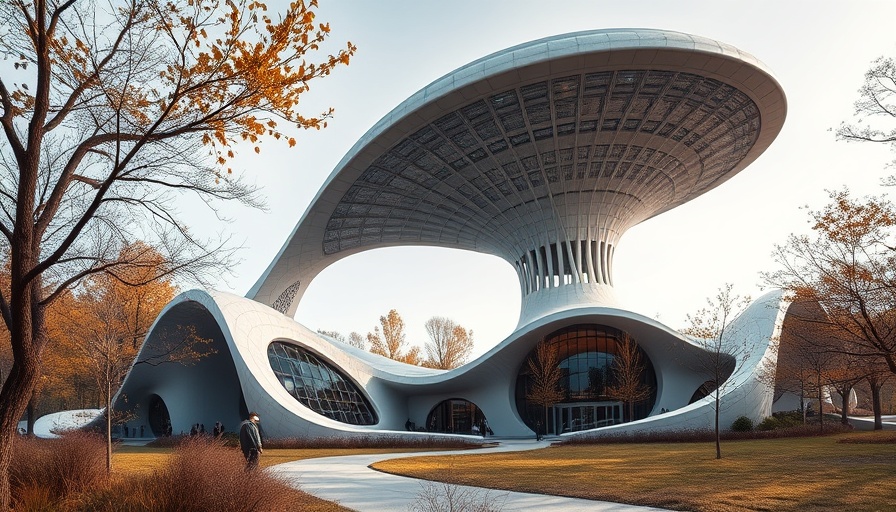
Exploring New Frontiers: How AI is Transforming Architecture
In the ever-evolving world of architecture, artificial intelligence (AI) is breaking down traditional boundaries between imagination and reality. From painting and literature to music composition, AI is now making waves in the architectural sphere, challenging architects to rethink their approaches and redefine what is feasible in building design.
Rediscovering Architectural Potential
Architects have long relied on technology to push the limits of physical structures. Historical software innovations, such as Sketchpad in 1963, have enabled architects to conceptualize and visualize their designs on screen. Today, the capabilities range from software for drafting and building information modeling (BIM) to tools for energy tracking and sustainability. As noted by Karl Daubmann from Lawrence Technological University, the latest advancements in AI, including platforms like Midjourney and Stable Diffusion, are emerging as revolutionary tools that blend creativity with functionality.
Transductions: A Glimpse into AI-Driven Design
A notable exhibit, "Transductions: Artificial Intelligence in Architectural Experimentation," showcases works from over 30 professionals who have spent years exploring the intersection of AI and architecture. The exhibition, held at Pratt Institute in Brooklyn, highlights experimental designs leveraging emerging technologies. According to co-curators Jason Vigneri-Beane, Olivia Vien, Stephen Slaughter, and Hart Marlow, the intent is not to present immediately executable projects but rather to explore the theoretical aspects of AI's application in architecture.
The Architects' Perspective: Embracing AI as a Tool
Contrary to fears of AI threatening job security within the architectural profession, many, including Vigneri-Beane, advocate for viewing AI as an extension of the architect's toolkit. He acknowledges a sense of unease among peers but emphasizes familiarity with new technological rhetoric. Rather than diminishing human creativity, AI invites architects to hone their skills and creative vocabulary, exerting their visual sensibilities like never before.
Future Pathways: Bridging Theory and Practice
Despite fears surrounding job displacement, AI is viewed by many architects as a pathway to explore uncharted territories in design. With tools evolving at an unprecedented rate, the potential for creating dynamic structures that were once thought impossible grows exponentially. The conversation is shifting as more architects recognize that engaging with AI can augment their skillset rather than replace it.
Challenges and Ethical Considerations in AI-Driven Design
With great potential comes significant responsibility. Architects must navigate ethical considerations surrounding AI, particularly regarding originality and authenticity. As AI generates stunning images and designs, it blurs the lines between human creativity and machine outputs. Does an AI-generated product hold the same value as one conceived by an architect's mind? These are the dilemmas architects face as they embrace this technological evolution.
Engagement Beyond the Exhibit: Community and Collaboration
The notion of collective engagement is vital in the ongoing dialogue about AI in architecture. Workshops, collaborative projects, and forums have emerged to bolster this momentum, facilitating exchanges among architects, engineers, and AI specialists. This convergence fosters a deeper understanding of AI's potential and nurtures innovative ideas that might lead to groundbreaking designs of the future.
Conclusion: A Call to Action for the Architectural Community
As architecture continuously evolves through the fusion of tradition and technology, it invites both excitement and apprehension. For architects, AI isn't the end of their profession; rather, it's an extension that opens new doors. Embracing these technologies invites questioning, exploration, and ultimately, the enhancement of what architecture can achieve. Architects are encouraged to engage with AI thoughtfully, seize the experimental spirit showcased in exhibits, and participate in the larger conversation shaping the future of design.
 Add Row
Add Row  Add
Add 
 Add Element
Add Element 


Write A Comment